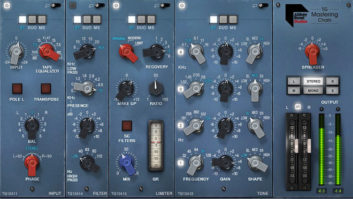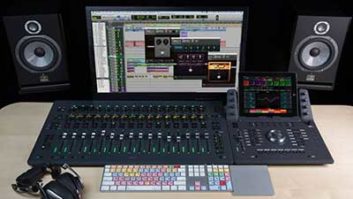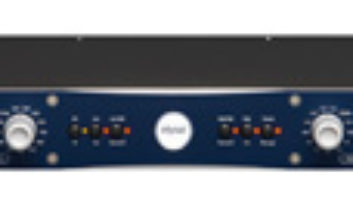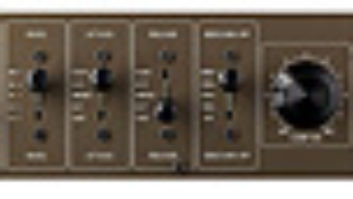The past five to ten years have witnessed a whole lot of pro audio hardware development focused on the boom in 500 Series products. But this year we found that there’s been something of a return to rackmount processors, with a particular focus on tools for mastering engineers. Here are six that caught our eyes and ears in 2018.
Manley Nu Mu Stereo Compressor
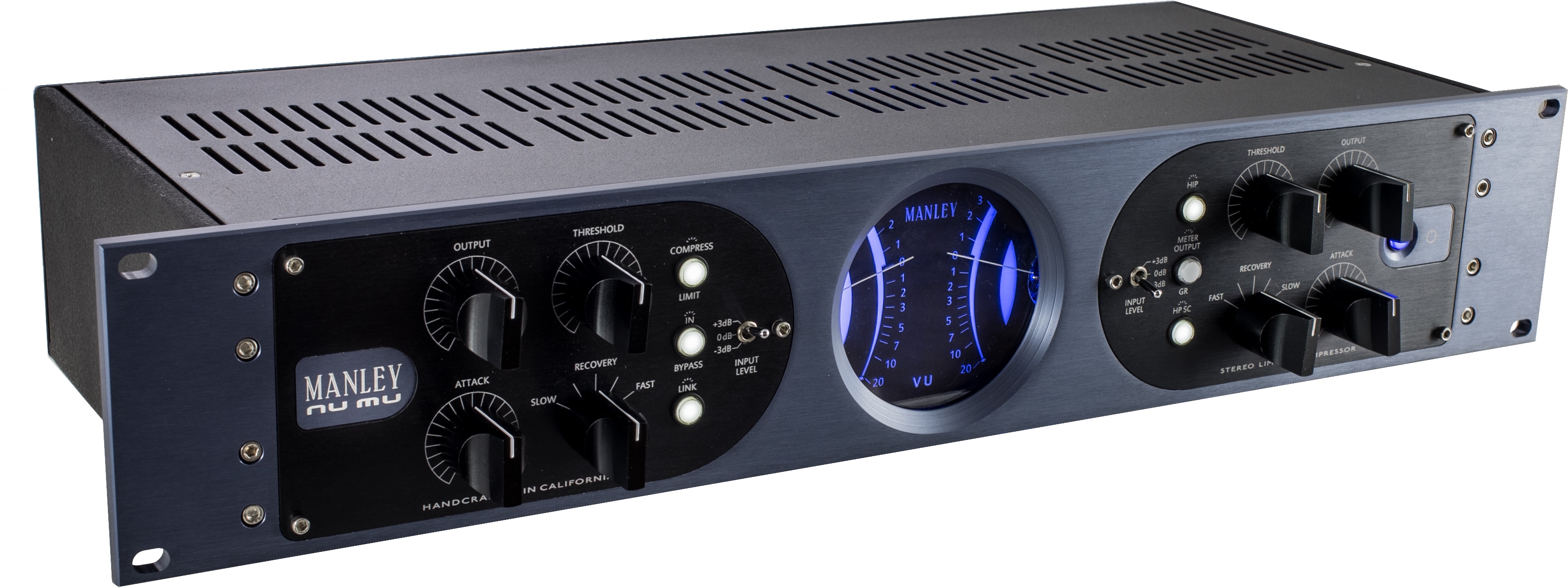
The Manley Nu Mu is a 2-channel, variable mu limiter/compressor designed to operate as either a stereo processor or two individual channels. Like the original and very popular Variable Mu, the Nu Mu starts with Manley’s IRON input transformers and four 6BA6 pentodes in a TBAR Mod configuration where the first stage pentode is wired as a triode. But then the Nu Mu departs from the Variable Mu’s circuit by using a discrete high-voltage transistor and FET circuit for its transformerless output. There are no operational amplifiers used, and the sidechain technology from the all-tube Variable Mu appears in a solid-state version. Also new is an ultra-low impedance switched mode power supply that provides 145V plate high voltage, 6.3V filament voltage, and the ±15V DC for the transistor circuitry.
The Nu Mu uses a three-position input level toggle switch for each channel rather than the single, ganged pot for both channels as in the Variable Mu, with -3 dB, 0 dB and +3 dB input operating level choices. Maximum input levels are +25 dBu, +21 dBu and +18 dBU, respectively. There are separate controls for each channel, with each channel having continuously variable output, threshold and attack controls. Attack times range from fully CCW for slowest at 0.13 seconds, midway at 0.07, and fully CW for the fastest release at 0.013 seconds. The recovery (release) time control uses five rotary switch positions with 0.1, 0.16, 0.32, 0.64 and 1.7 seconds. Front panel controls continue with a compress/limit switch for either 3:1 or 10:1 compression ratios, and a channel link switch that links the left channel’s threshold, attack and recovery settings to the right channel. It also has a pair of large, blue backlit Nissei VU meters.
Solid State Logic Fusion
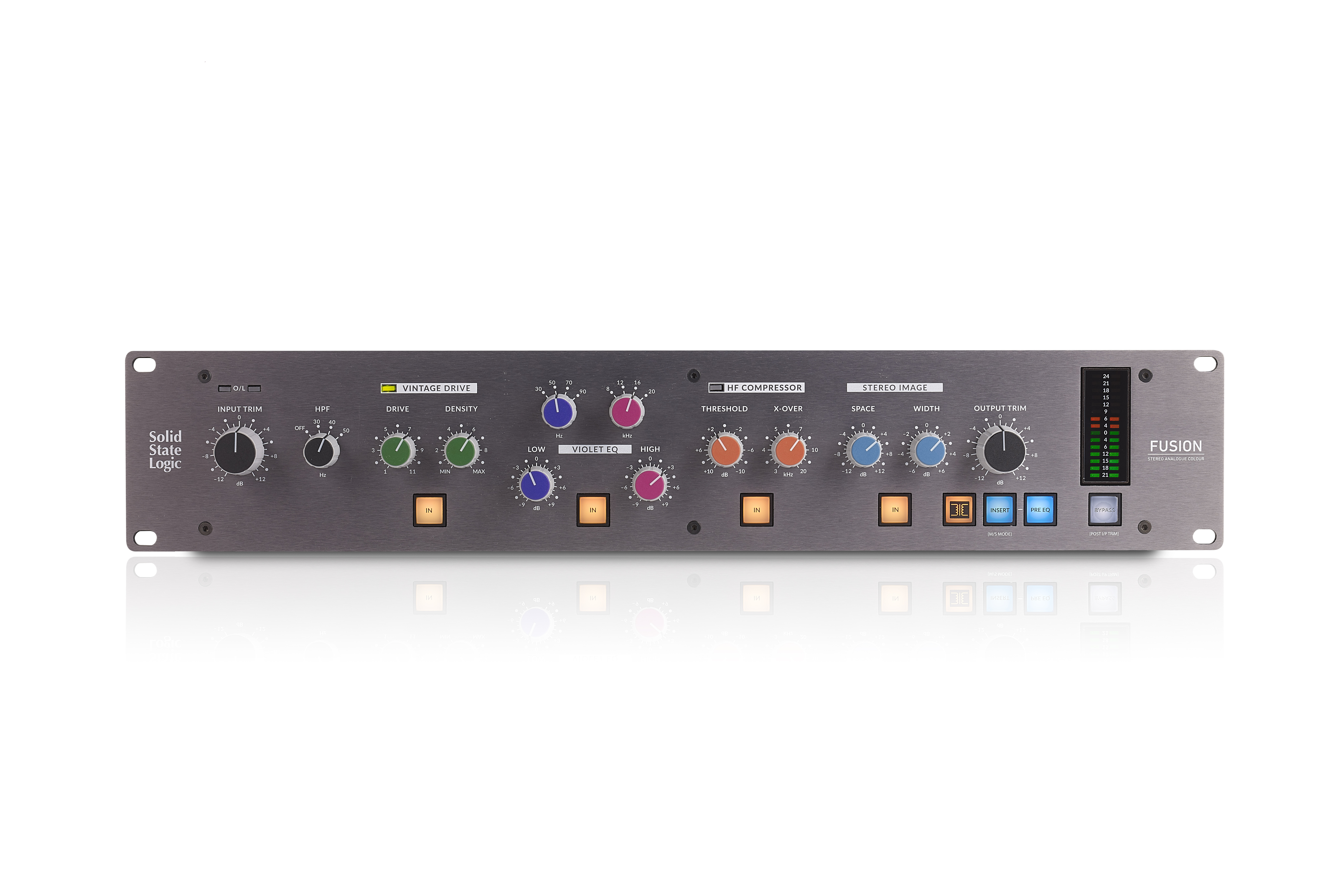
SSL, legendary for its analog electronics and a pioneer in digital technologies, has recognized the hybrid workflow since it became “a thing.” And now, with the release of Fusion and its five all-new analog processors that can be used discretely or combined, the company has re-injected its print on how modern records are made—with a bit of warmth and coloration. The processors include Vintage Drive, a nonlinear harmonic enhancement circuit with drive and density controls that interact to produce harmonic saturation and soft compression derived from overloading an analog circuit; SSL Violet EQ, the first new SSL analog EQ circuit in more than 25 years, an all-new minimum phase-shift, two-band shelving EQ with high- and low-frequency circuits each offering four switched frequency points and ±9 dB attenuation; High Frequency Compressor, which effects high frequencies only and is optimized for smooth and transparent harshness reduction and a tape-like high-frequency roll-off; Stereo Image Enhancer, providing a true analog mid-side circuit; and SSL Transformer, which introduces subtle low-frequency saturation, alongside a high-frequency phase shift. Available this month.
Eventide H9000 Multi-Effects Processor
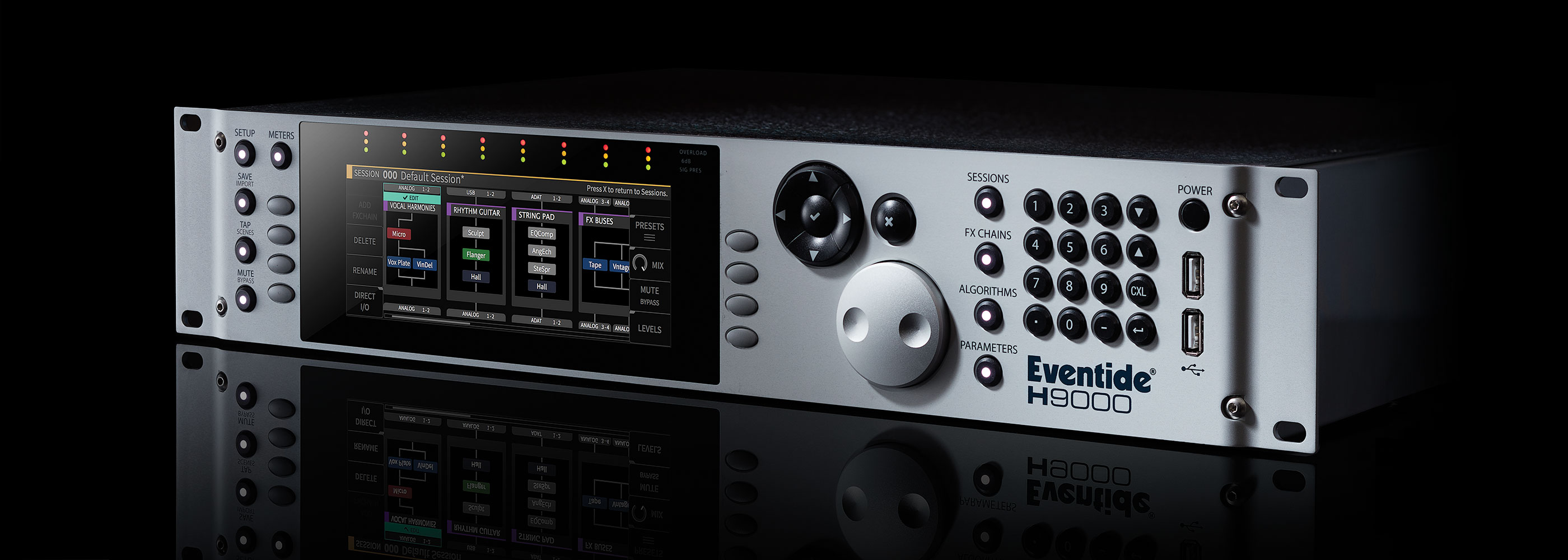
At NAMM in January 2018, Eventide debuted its new flagship multi-effects processor, the H9000, billed the “next generation Harmonizer.” The culmination of nearly 50 years of R&D, the H9000 comes loaded with 1,600 unique algorithms, from re-creations of beloved classics to the company’s latest effects, which can be developed into FX chains through a new innovative management system. Perhaps its most significant development is the inclusion of multicore general purpose ARM processors, which are said to deliver more processing per dollar and streamline new algorithm development. The H9000’s quad-core ARM processors reside on four upgradable modules. The H9000 is reportedly eight times more powerful than the H8000FW, and 16 times more powerful than Eventide’s popular H9 stompbox. It can run 16 simultaneous heavy-duty algorithms. Features include 8 channels of analog I/O, 16 channels over USB, and up to 8 channels AES/ADAT/SPDIF. An additional 32 channels can be added via three expansion card slots. Dante and MADI connections are also available. It includes eight assignable LED meters and a remote control app for Mac and Windows.
Bettermaker Mastering Equalizer
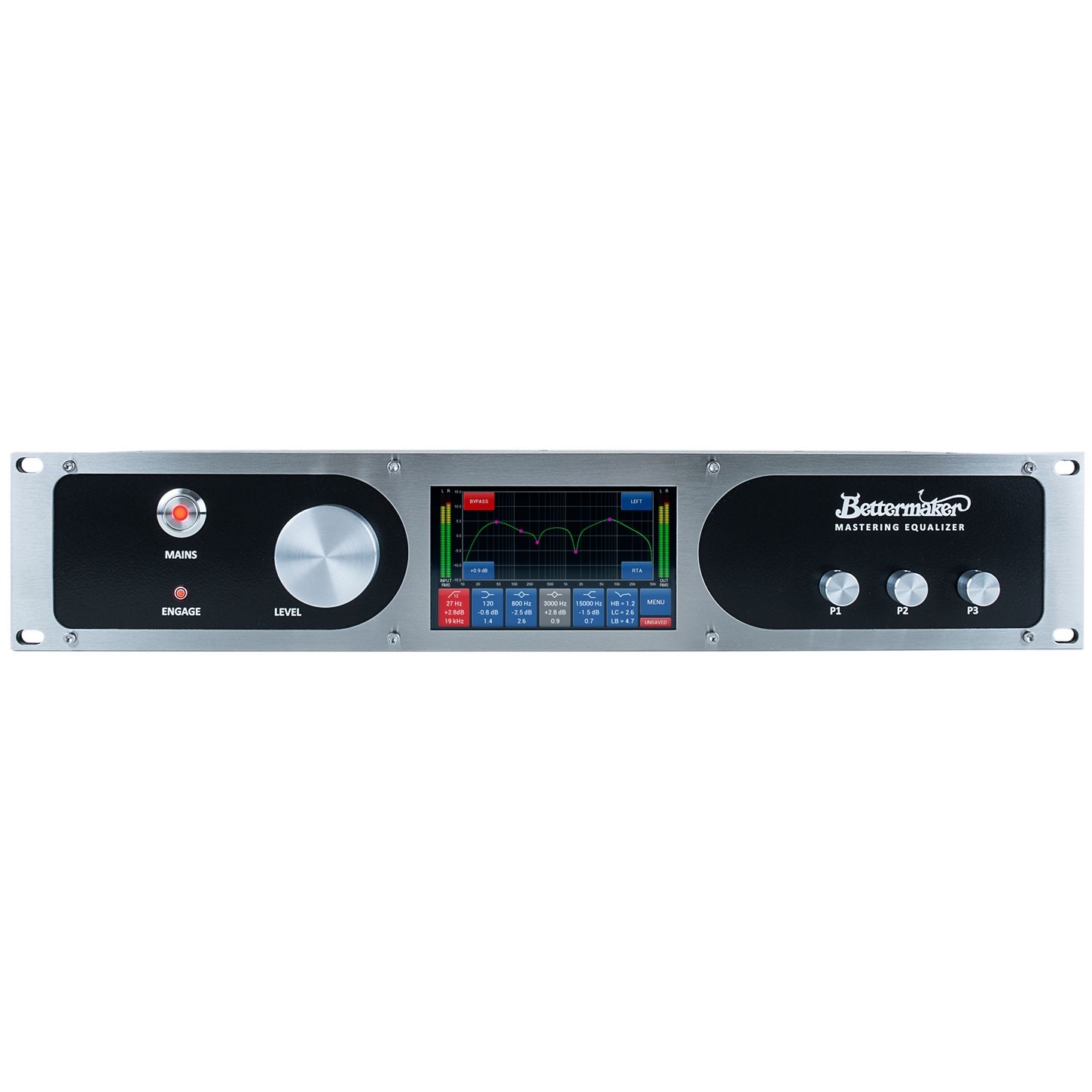
U.S. distributor TransAudio Group released the Bettermaker Mastering EQ in North America this past summer, billing it as “one of the most versatile equalizers on the market.” The German company is known for its integration of pure analog signal path processors controlled digitally by plug-in recall and automation. The Bettermaker Mastering Equalizer is configured for stereo, dual mono or M/S operation and features four parametric bands (two of which can be toggled to shelving), low- and high-cutoff filters, and a passive Pultec-style section with “air bands” at 23 kHz and 28 kHz. A comprehensive digital control workflow includes a 5-inch touchscreen with “plug-in style” EQ curve representation paired with RTA of the pre- and post-processing signal for visual confirmation of the equalizer’s effect. Individual EQ bands can be toggled on and off, and up to 400 presets can be stored and recalled. Like all Bettermaker processors, the mastering equalizer also works in conjunction with a control plug-in that duplicates the front-panel controls and allows for instant session recall, full parameter automation and, unlike any other analog processor, A/B comparison not just of the bypassed versus processed signal, but of two differently-processed signals.
UK Sound Mono 176 Compressor
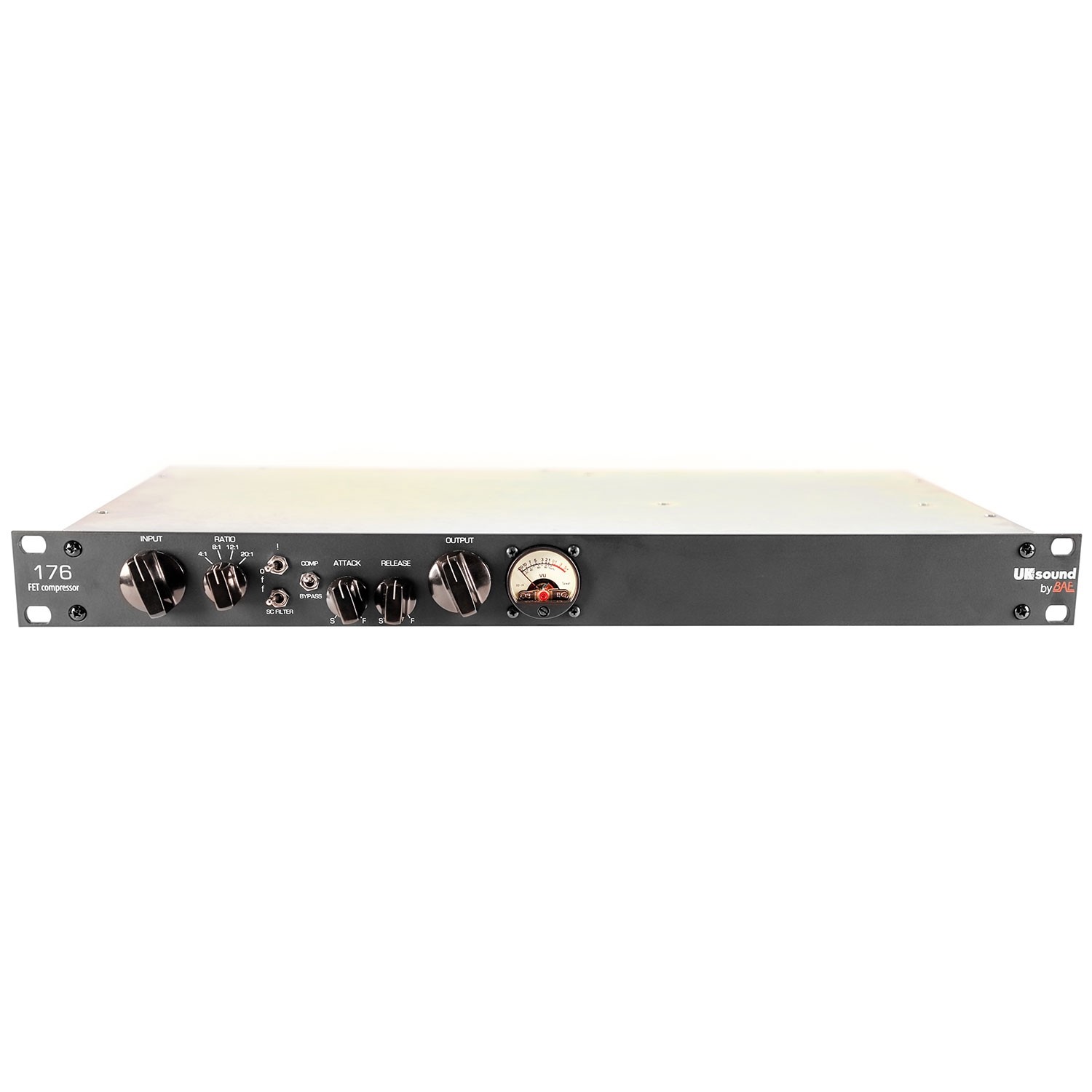
Right around AES 2018, UK Sound, a division of BAE that seeks to bring the company’s high-end technologies down to a more affordable price point, unveiled its new 176 single-channel compressor, the company’s homage and take on the classic UREI 1176. A mono Field Effect Transistor (FET) compressor and peak limiter, the UK Sound 176 compressor emulates features of the original 1176 while aiming to replicate the brightness, presence and energy for which that compressor is known. The unit includes a single input control knob, effectively acting as a threshold control that depends on the ratio selected, as well as an output gain control, which, like the original 1176, gives users access to more gain than standard compressors. The 176 features selectable ratio options of 4:1 and 8:1 for compression, and 12:1 and 20:1 for limiting, as well as variable attack and release controls. With the “!” toggle switch, the UK Sound 176 also replicates the 1176’s “All Buttons In” feature, which delivers increased distortion, plus a plateaued slope and lag time in response to initial transients. It includes a bypass toggle switch, as well as a side-chain filter switch to let low frequencies pass through without engaging the compressor when the SC Filter is switched on.
SPL PASSEQ
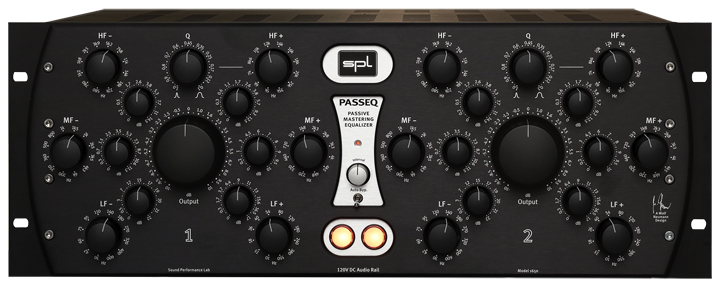
The newly updated PASSEQ passive mastering equalizer from German manufacturer SPL complements the company’s highly acclaimed range of 120V audio rail Mastering Series processors. The new PASSEQ offers the flavor and genuine sound of passive inductive coil filter equalization. Touted as “the most versatile passive equalizer ever built,” each channel of the new PASSEQ offers 72 passive filters—all built with high-grade single core coils. Compared to its predecessor, the new PASSEQ sports an extended high frequency EQ range to 35 kHz, and the Mid Frequency Cut now starts much lower at 200 Hz compared to its predecessor at 1 kHz. Other new features include a ±10 dB output gain control for precise calibration and the Auto Bypass function with interval control that is also featured on SPL’s IRON mastering compressor and the PQ mastering equalizer.
